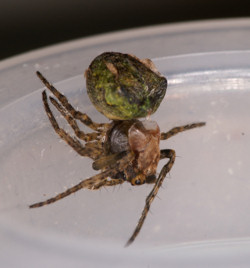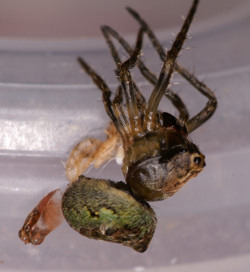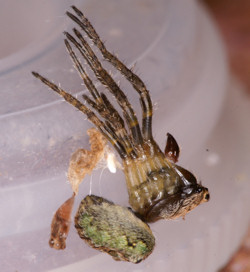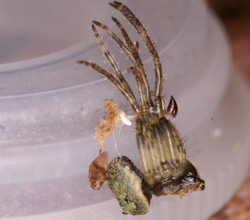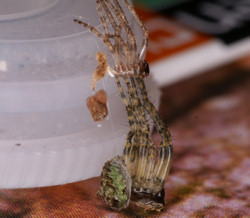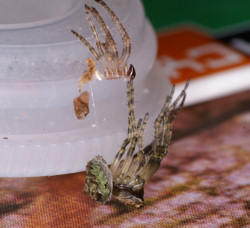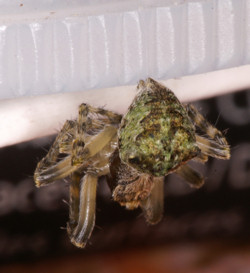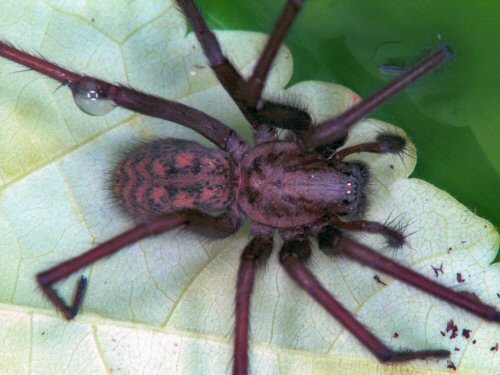
The spiders have circulating blood in their bodies. The colourless blood, called hemolymph, transports nutrients, hormones, oxygen and cells. The blood also serves another purpose. It is used locally to raise the blood pressure during moulting (shedding of old skin) and stretching the legs.
In mammals haemoglobin molecules, present in the red blood cells, transport oxygen. The spider uses a more complicated protein called hemocyanin. Unlike hemoglobin, hemocyanin is not stored in a cell but flows freely in the blood of a spider. Hemocyanin is a protein that is made up of 24 sub-units with a molecular mass of 1.704.000 compared to the molecular mass of oxygen, which is only 32. Human haemoglobin is made up of 4 sub-units with a molecular mass on 64.500. Haemoglobin is a molecular disc, made of nitrogen, carbon, hydrogen and an iron atom at the centre. The oxidized iron gives the molecule its characteristic red colour. Haemocyanin also contains nitrogen, carbon and hydrogen but has a copper atom at the centre instead of an iron atom. The oxidized copper gives the molecule a blue colour. Hemocyanin binds oxygen but only releases it after it receives the right chemical signal. For every of the 24 sub-units there is special chemical signal. Depending on the need for oxygen a cell can give more or less signals. Beside these signals the release of oxygen is also controlled by temperature. Every sub-unit has a specific temperature optimum.
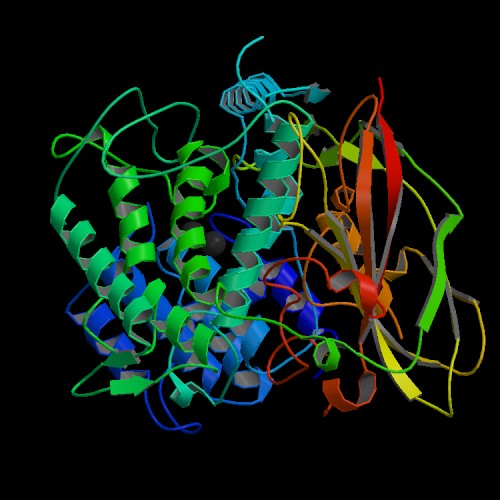
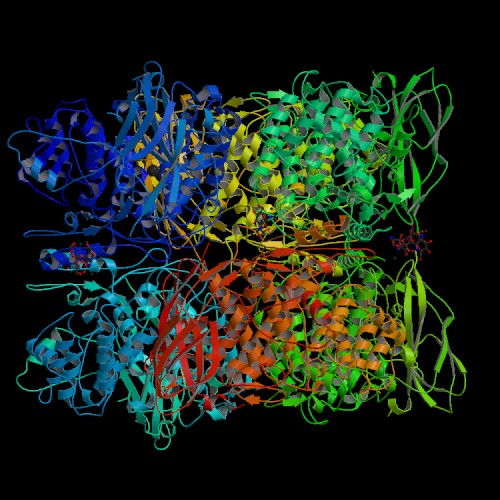
The heart is located on the back of the abdomen. This is an open tube called pericardial-sinus with valves, which is hung in a cavity. Elastic muscles around this cavity contract, enlarging the tube. Because of the valves in the tube the blood can flow in only one direction. If the tube is filled with fluid the muscles relax and the blood is pressed out of the tube. The heart has it own nerve centre that can let the heart beat independently from the brains.
There are connections with the brain that can raise the heart frequency. This can be registered if the spider becomes excited and its heart frequency rises.


